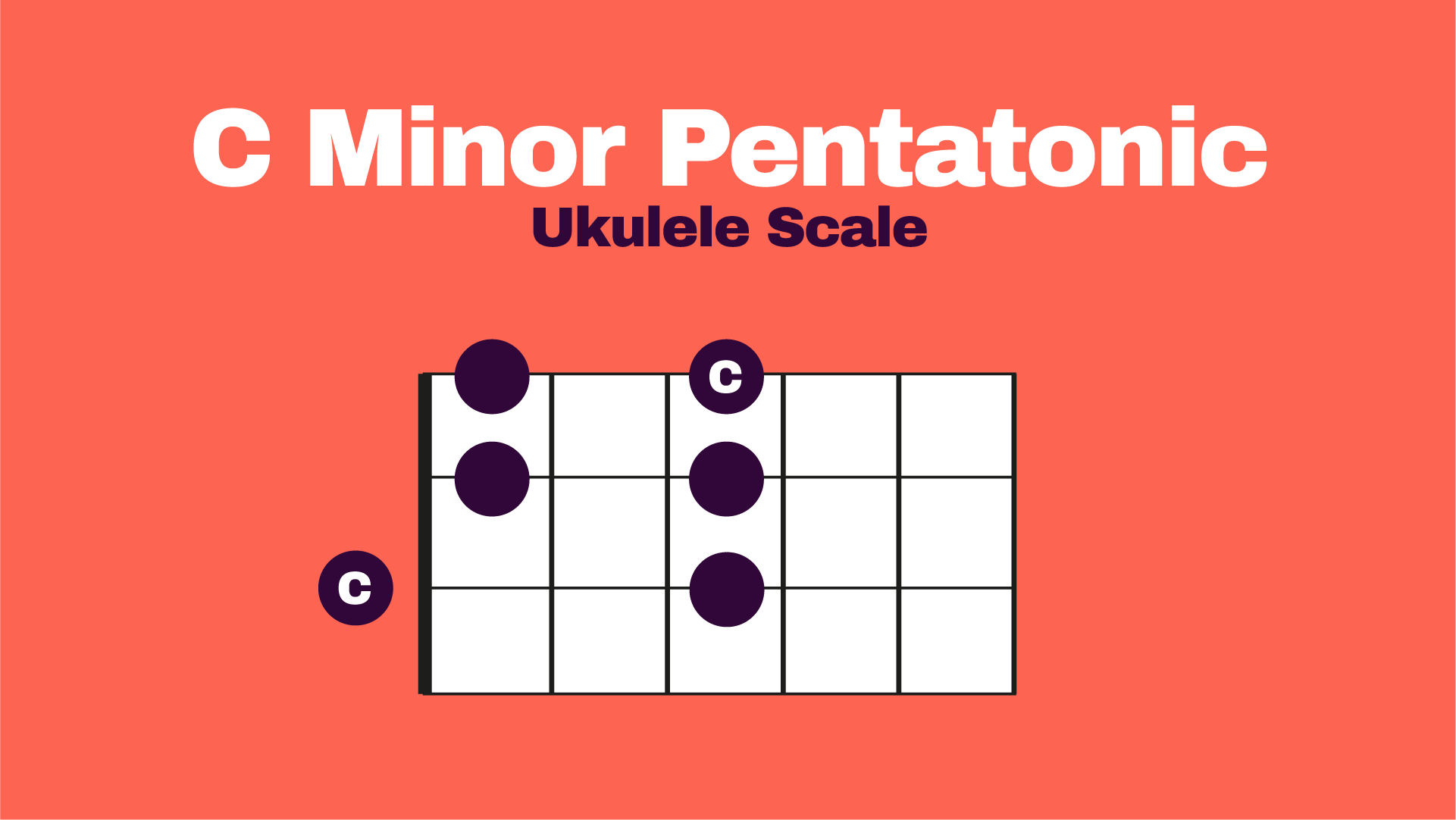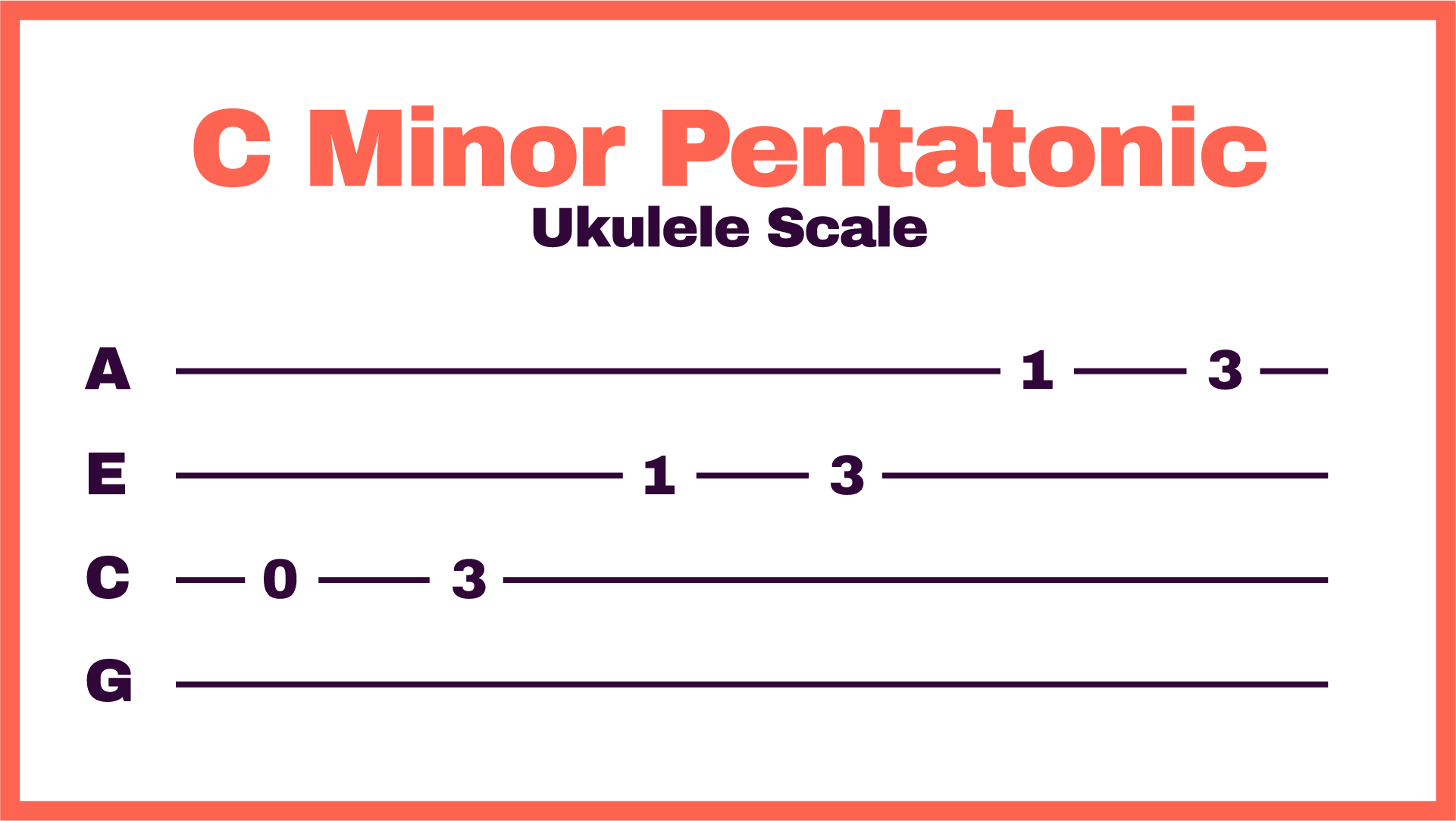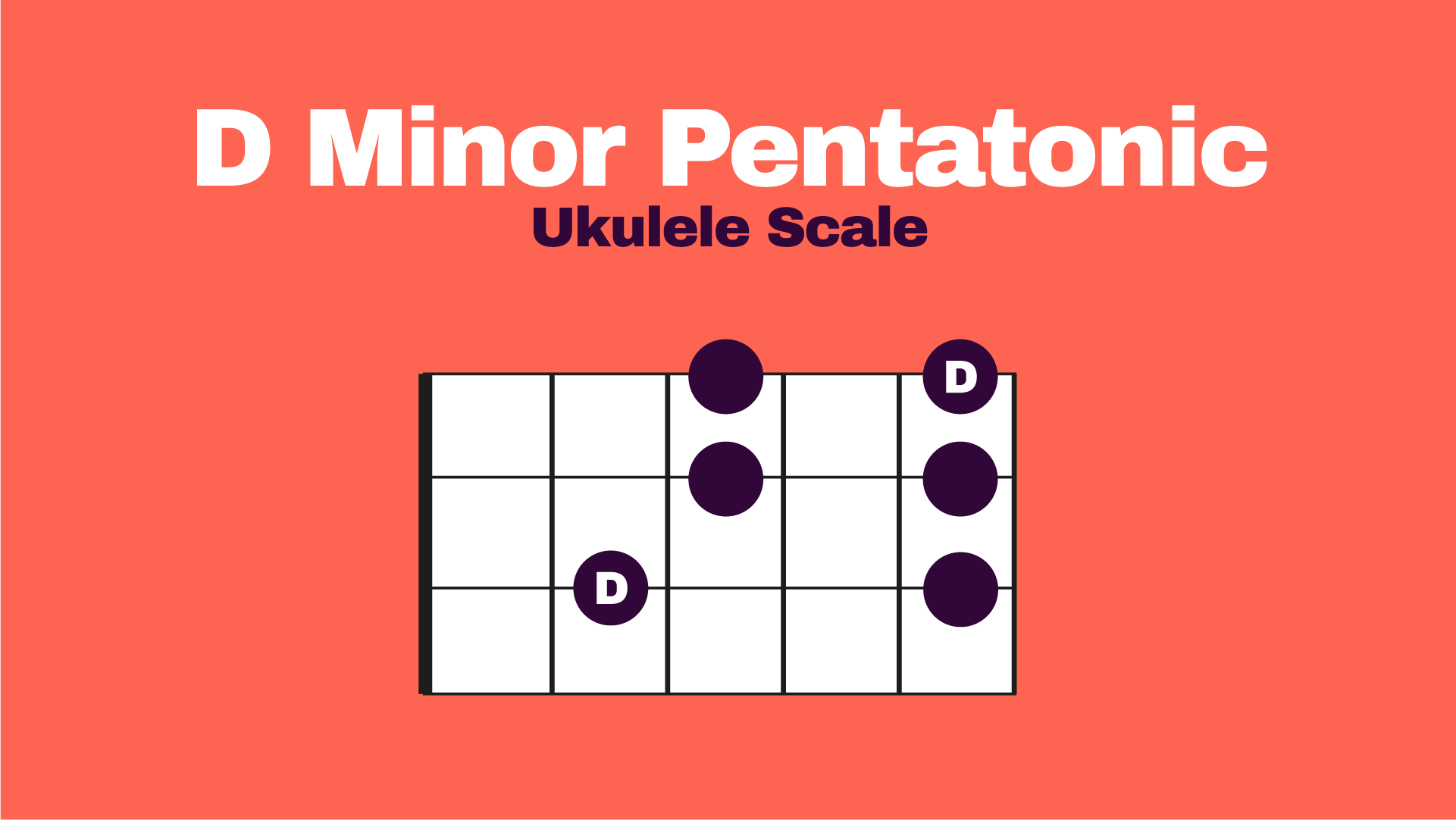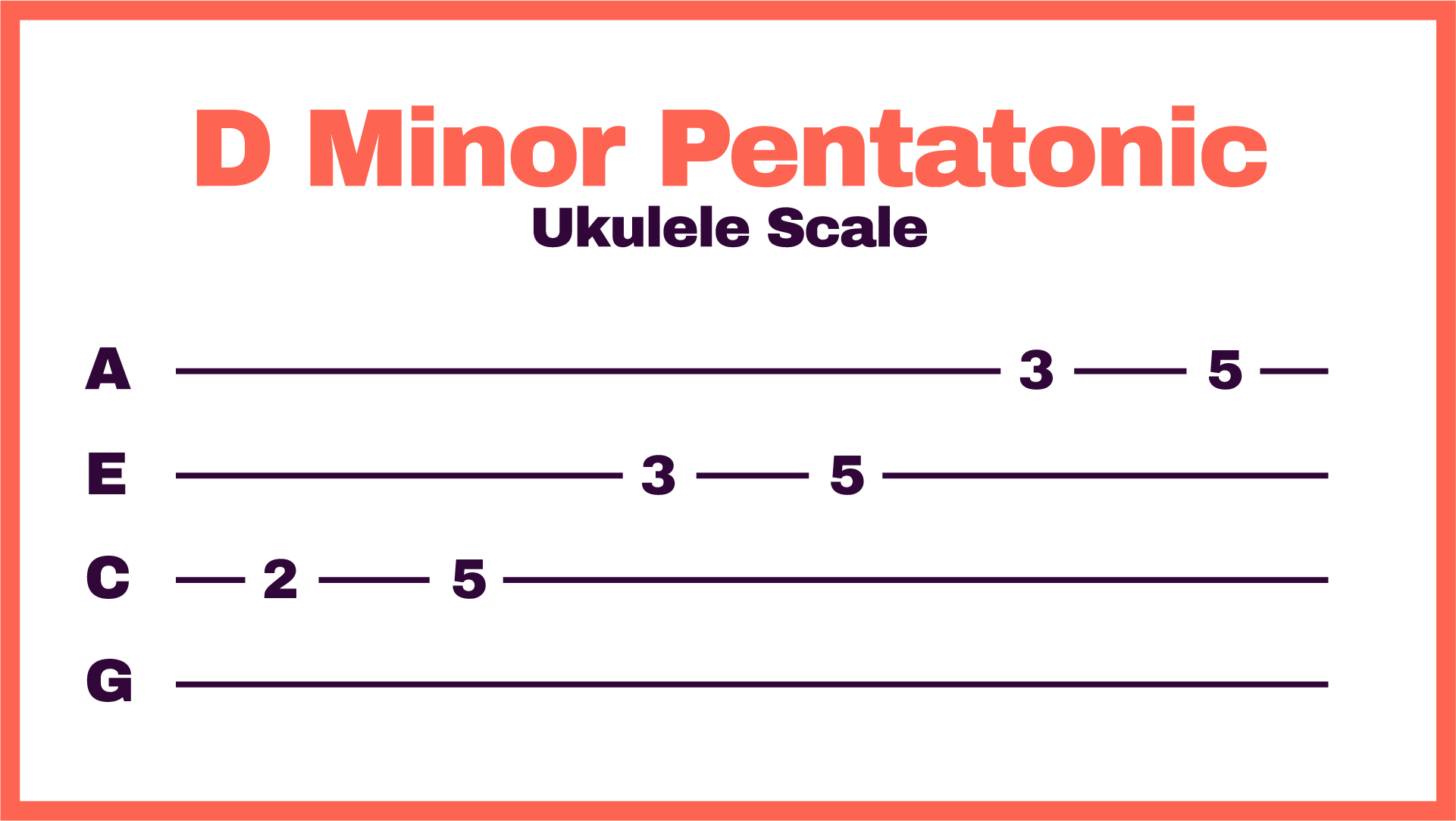If you’re interested in learning scales on your ukulele, and you should be, where better to start than the easiest scale of all? The minor pentatonic scale.
The minor pentatonic scale is the easiest scale to learn because it contains just five notes, and we can all learn five notes right?
That isn’t the only reason to learn the minor pentatonic scale though, it’s also incredibly useful as it’s used in a lot of modern music, particularly blues, rock and pop.
Learning this scale will help you start to be able to make your own solos and melodies and it will develop your technique and understanding of your ukulele’s fretboard.
C Minor Pentatonic
We’ll start by learning the minor pentatonic scale in the key of C, again we’re starting here because its easy. Later on I’ll show you how to adapt this to any key and it’s really not that hard.
Typically scales take their name from the root note, basically the note which you start the scale on.
Here’s what the C Minor Pentatonic scale looks like on a fretboard diagram…

And here it is in tab form…

In the following audio clip, I walk up the scale slowly so you can hear what the C minor pentatonic scale sounds like.
If you’re a highly awakened individual then you might be saying ‘hang on Dave, you told me it was only 5 notes and now you’re showing me and playing 6’.
You would be right.
The 6th note I am playing is also a C note, it’s an octave up from our start note so it’s technically the same note.
How to practice
To be honest, scales are really boring to practice. There are way too many exercises out there that have you walk up and down a scale and it’s super monotonous.
It is definitely worth practicing it up and down until you get it locked in, but beyond that, I think it’s important to make it a bit more interesting.
Improvising
First up, have a little play around with some improvising. There are loads of backing tracks on Youtube that I like to put and and just mess around with scales over the top. If you search for C Blues Backing Track you won’t go far wrong.
I’ve also created a very simple backing track here that you can use, I’ve kept it really simple so you don’t need to worry too much about me playing any fills or anything similar.
Use the C minor pentatonic scale from above over the top of this track.
Change The Pattern
Another way to practice the minor pentatonic scale is to change up the pattern. Instead of moving up the scale in a linear pattern, try to mix it up a bit.
As an example, move up the scale 2 notes and then back 1, then moves up 2 more and back 1.
Make up your own patterns and try them, you can miss notes out too. Instead of playing the next note up, miss one out. Try all different kinds of patterns.
Changing the key of the minor pentatonic scale
So we’ve got the C minor pentatonic scale down but I did promise to show you how to change this to any key. Let’s do it.
Essentially all we need to do to change the key is slide the whole scale up or down.
So to switch our C minor pentatonic to a D minor pentatonic scale we’re going to need to move the whole scale up 2 frets (C, C#, D).
Instead of starting with the open C string, we’re now starting on the second fret of the C string. Our scale on a fretboard diagram now looks like this…

And tabbed out it looks like this…

And here I am playing through the D minor pentatonic scale.
The same logic applies to any other key that we would like to play our minor pentatonic scale in.
So for example if we are wanting to play an E minor pentatonic scale we’d be starting on the 4th fret of the C string. For an F minor pentatonic scale it would be the d5th fret and so on.
Hopefully you’ve found this lesson pretty useful. Any questions, please let me know in the comments.




This speaks to me. Thanks.
Glad it helped
which fingers are playing the various notes?
As a rough rule of thumb, your index finger would pick up the notes on the first fret and your third finger the notes on the third fret
Thanks very much
Thanks for this. Very clear, and precise
You’re welcome
Great and simple,
thx 🙂
it’s helping in impro solos 😀
Glad it’s helping